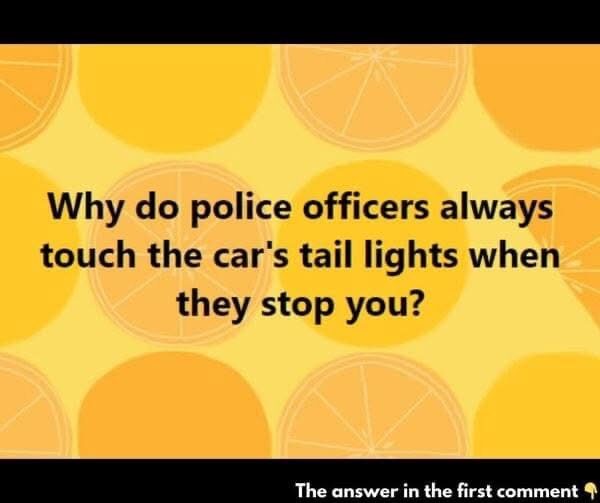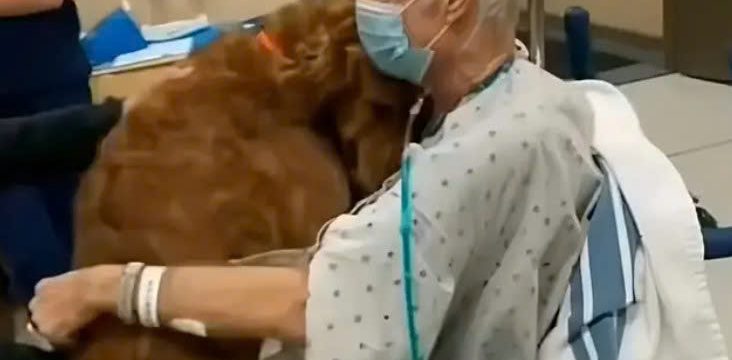Getting pulled over by a police officer can be a stressful and unsettling experience. The flashing red and blue lights reflected in your rearview mirror are enough to make anyone’s heart race. As you pull over and prepare to interact with the officer, you might notice something peculiar: the officer reaches out and touches your car’s tail lights. At first glance, it might seem like an odd or unnecessary action, but this small gesture serves a number of important purposes. Why do police officers do this? Is there a deeper meaning or practical reason behind it? In this article, we’ll explore the fascinating reasons why officers routinely touch the tail lights of vehicles during traffic stops.

One of the primary reasons officers touch the tail lights of a car is for documentation purposes. When an officer places their hand on the vehicle, they leave behind a fingerprint. This small, often unnoticed act could be crucial in certain situations. For example, if the driver of the vehicle were to flee the scene or if a dispute arose later about the details of the interaction, the officer’s fingerprint on the tail light would serve as physical evidence that the stop occurred. This practice helps establish a timeline and connection between the officer and the vehicle, providing a reliable piece of evidence in case the situation escalates or becomes legally complicated. It’s a simple but effective way to ensure accountability and traceability.
Beyond leaving a fingerprint, touching the tail lights also acts as a precautionary measure for the officer’s safety. Traffic stops can be unpredictable and sometimes dangerous. By briefly placing their hand on the tail lights, officers can check that the trunk or rear compartment of the vehicle is securely closed. This is particularly important because an unsecured trunk could potentially hide a person or weapon, posing a threat to the officer’s safety. By verifying that the trunk is closed, the officer reduces the risk of any unexpected dangers coming from the rear of the vehicle.
In addition to these practical benefits, the gesture of touching the tail lights serves a psychological purpose. The act of physically interacting with the vehicle signals to the driver that the officer is observant and fully aware of their surroundings. If the driver had any intention of hiding something illegal or engaging in suspicious behavior, this small, deliberate action can disrupt their plans and make them think twice. It’s a subtle yet effective way of reminding the driver that the officer is paying close attention to every detail of the situation.
Interestingly, the practice of touching tail lights dates back to an era before modern technology provided law enforcement with advanced tools like dashboard cameras and body-worn cameras. In those days, leaving a fingerprint on the vehicle was one of the few reliable ways to document a traffic stop. While technology has since evolved to include video recording and other digital methods of documentation, many officers continue to touch the tail lights as a nod to tradition. It’s a habit that has persisted over the years because it still serves multiple practical purposes.
Touching the tail lights also helps establish a presence of authority during the traffic stop. A traffic stop is a tense and often intimidating experience for both the driver and the officer. By physically interacting with the vehicle, the officer asserts their control over the situation in a non-verbal manner. This subtle assertion of authority can help set the tone for the interaction, ensuring that the driver understands the seriousness of the stop and the need to comply with the officer’s instructions. It’s a small action that can go a long way in maintaining order and reducing the likelihood of escalation.
Although the gesture of touching a car’s tail lights might seem unnecessary in today’s high-tech world, it remains a meaningful part of police protocol. It reflects a combination of historical tradition, practical safety measures, and psychological tactics aimed at ensuring both the officer’s safety and the driver’s compliance. Even with advancements in technology, this small but significant habit continues to play a role in modern law enforcement practices.
So, the next time you see a police officer touch the tail lights of a car during a traffic stop, you’ll know there’s more to it than meets the eye. It’s not just a random or outdated habit; it’s a deliberate action rooted in safety, accountability, and tradition. This seemingly simple gesture underscores the meticulous attention to detail that officers bring to their duties, reminding us that even the smallest actions can have a big impact on maintaining safety and order.





